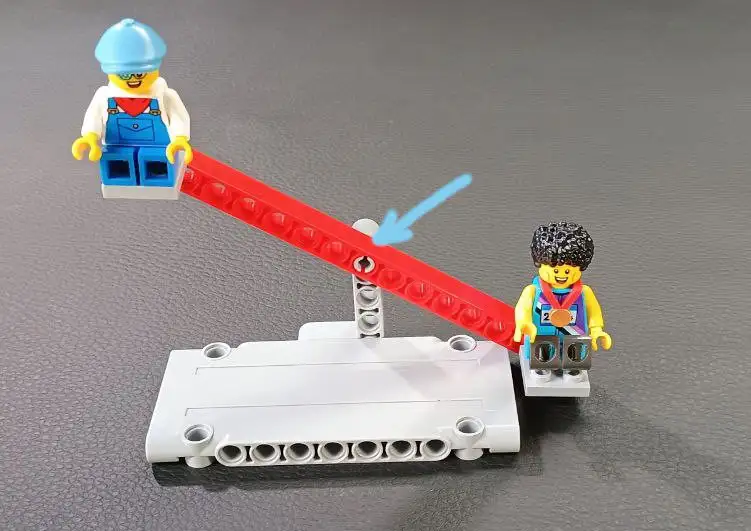Understanding the Fulcrum with Lego Technic
The fulcrum is a fundamental concept in mechanics, acting as the pivot point for levers. By using Lego Technic, we can create models that illustrate how fulcrums work and their importance in mechanical systems.
What is a Fulcrum?
A fulcrum is the point on which a lever rests or is supported and on which it pivots. It plays a crucial role in determining how a lever can be used to lift or move loads.
How Levers Work
Levers consist of three main parts:
- Fulcrum: The pivot point.
- Load: The weight or resistance to be moved.
- Effort: The force applied to move the load.
There are three classes of levers:
- First-Class Lever: The fulcrum is between the effort and the load (e.g., seesaw).
- Second-Class Lever: The load is between the fulcrum and the effort (e.g., wheelbarrow).
- Third-Class Lever: The effort is between the fulcrum and the load (e.g., tweezers).
Lego Technic Application
Using Lego Technic, you can build models to demonstrate how fulcrums work in different types of levers.
Example Build: First-Class Lever (Seesaw)
Components:
- Long Technic beam (lever)
- Technic turntable (fulcrum)
- Weights (load)
Steps:
- Build the Fulcrum: Attach the Technic turntable to a base to act as the pivot point.
- Attach the Lever: Place the long Technic beam on the turntable.
- Add Weights: Place weights on either side of the beam to represent the load.
How It Works:
- By applying force (effort) on one end of the lever, the opposite end lifts the load.
- The position of the fulcrum determines the ease of lifting the load.
Exploring Mechanical Advantage
Mechanical advantage is the factor by which a machine multiplies the force put into it. For levers, it depends on the distances from the fulcrum:
- Longer Effort Arm: Requires less force to lift the load.
- Shorter Effort Arm: Requires more force to lift the load.
By adjusting the position of the fulcrum on your Lego Technic model, you can observe how the mechanical advantage changes.
Example Build: Second-Class Lever (Wheelbarrow)
Components:
- Technic beam (lever)
- Technic connectors (handle and load platform)
- Technic wheels (fulcrum)
Steps:
- Build the Lever: Attach connectors to the beam to form the handle and load platform.
- Add the Fulcrum: Attach wheels to the end opposite the handle.
- Place the Load: Put a weight on the load platform.
How It Works:
- When you lift the handle (effort), the wheels act as the fulcrum, and the load is lifted.
Conclusion
Understanding the fulcrum and how it works with levers is essential in mechanics. Lego Technic provides a hands-on way to explore these concepts, making learning interactive and fun. By building different types of levers and experimenting with fulcrum positions, you can see firsthand how these simple machines make work easier.
References
- “The Art of LEGO Design” by Jordan Schwartz
- “Practical LEGO Technics: Bring Your LEGO Creations to Life” by Mark Rollins
- “LEGO Technic Robotics” by Mark Rollins
